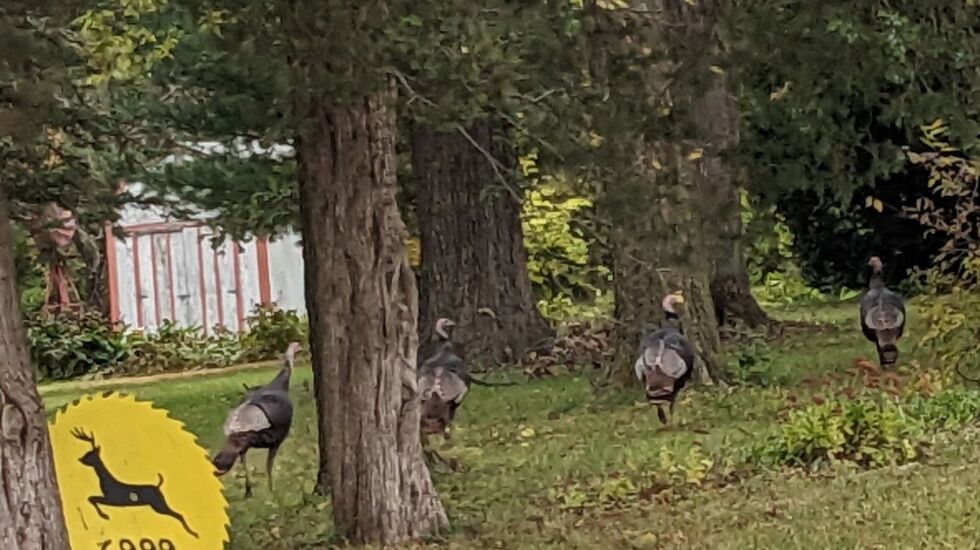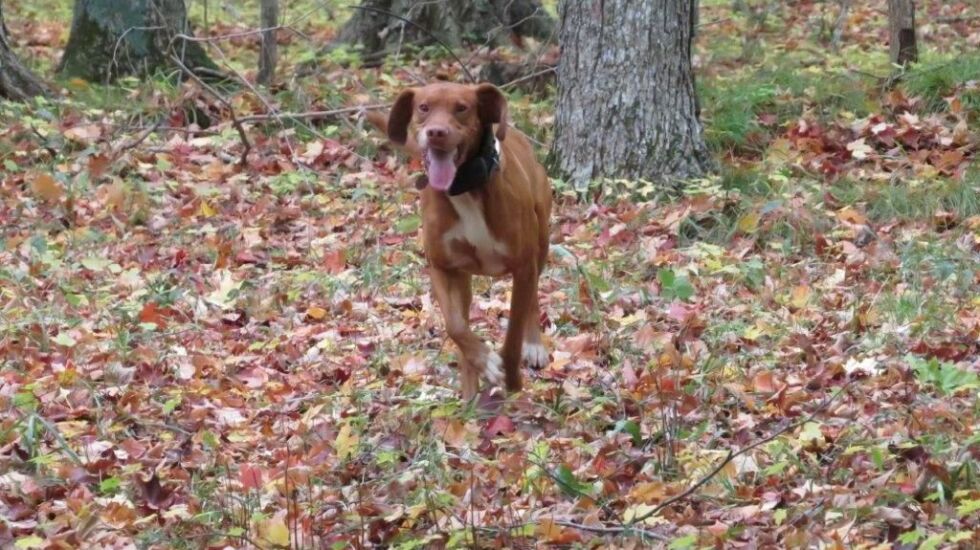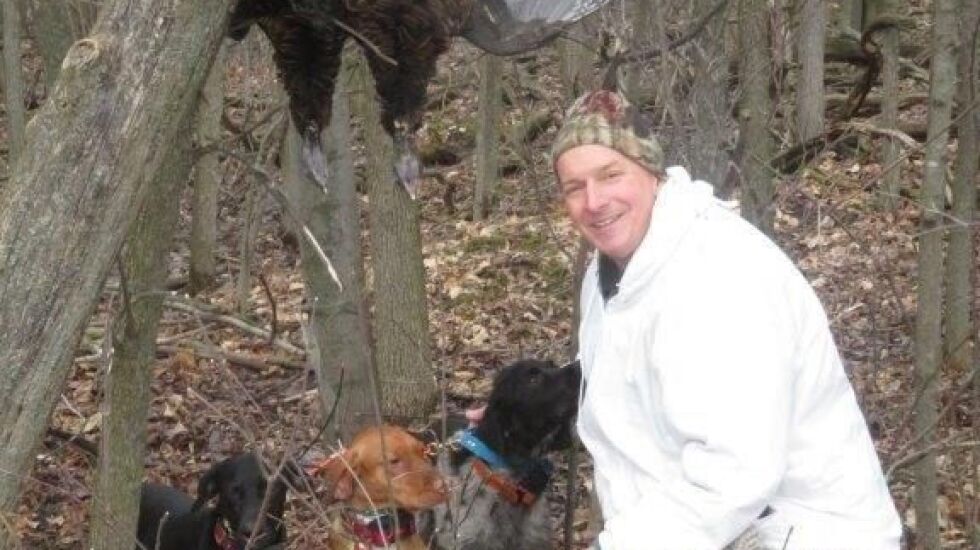
Red showed the brains of a great turkey dog.
Pete Lamar set the scene last weekend in Wisconsin, “We were hunting an ag field that was unharvested except for a few rows at the edges. We spotted a big rafter of turkeys in the open area but a long way away. If the dog had just charged at them, they would’ve moved off en masse and we might not have seen them again.
“Instead, he ducked into the unpicked corn and used it to hide his movements. He came out of the corn even with the turkeys and was able to get a good scatter and the human hunters went to work. Eventually four hunters got seven turkeys from this property.”
Turkey dogs need to be smart.
“The thought process he was showing was something I didn’t expect to see,” Lamar said. “Jon [Freis] said he didn’t train him to do that. Red learned it on his own.”

Illinois’ nine-day fall firearm season for wild turkeys starts today. It does not include use of turkey dogs and likely never will.
Nearby states allowing hunting with turkey dogs include Michigan, Kentucky and Wisconsin.
Turkeydog.org tracks the use of turkey dogs and currently 29 of the 43 states with a fall turkey season allow turkey dogs. Turkey hunting is typically split into fall and spring seasons: Fall for general turkey hunting, spring for calling in tom turkeys besotted with lust.
Lamar would love to see turkey dogs in Illinois, saying, “Absolutely, but it would be so difficult to do, deer hunting dominates so much.”
That and the vast majority of hunting in Illinois is done on private land, which limits options for hunting with turkey dogs.
Luke Garver, wild turkey project manager for the Illinois Department of Natural Resources, noted that turkey dogs tend to be from areas with long traditions of hunting deer and turkey with dogs, not the case in Illinois.
“But I am open to considering anything that hunting public is interested in,” he said. “If the public wanted it, we would certainly weigh all the options.”
Another issue is that Illinois is climbing out of a decline in turkey numbers (that might surprise suburbanites). But this year the number of poults per hen is the highest since 2018.
I’ve hunted raccoons behind hounds as kid. Growing up, I watched fox hunters run through Amish and Mennonite farms. I’ve hunted rabbits behind beagles and upland game behind pointers and flushers. Twice I’ve witnessed John Rucker working his turtle dogs, Boykin spaniels, to find ornate box turtles. The wildest dog work I’ve seen was a training run for bear dogs in northern Wisconsin.
Turkey dogs sound like something I must see. They’re not about the breed, but the brain. A good explanation of turkey dogs is at turkeydog.org/breeds.html.
Red, for example, is “a typical dropper, some sort of pointer x setter cross.” Droppers are common turkey dogs. Boykin spaniels have been used as turkey dogs.
“Any dog that shows interest and has intelligence can be a turkey dog,” Lamar said. “I hunted behind a purebred Vizsla and he did fine.”
He met Freis, the brains behind turkeydog.org, through his advocacy work. Lamar contacted him and asked if he could observe. Freis said to get a permit and come along to hunt, which Lamar, who lives in the western suburbs, has done for several years.
In the old days, barking helped track the dogs. Now it’s GPS, though turkey dogs respond to whistles and commands if within earshot.

“One reason so many out-of-state hunters travel to Wisconsin to hunt with Jon is for dog training,” Lamar said. “It’s great experience for their young dogs. In Virginia, eastern Kentucky or Tennessee, for example, there may be plenty of turkeys around, but they can be spread out. One could walk all day without contacting a flock. It’s usually possible to find a few — or more — on some of the small parcels in Wisconsin that we typically hunt.
“It’s great for the dogs’ development to get as much contact as possible with turkeys just to see and learn how the turkeys respond to a dog coming at them. When Jon’s dogs were puppies, we’d take them out into fields where we’d just seen turkeys so they could learn the scent they leave and try to trail them. We saw turkeys in someone’s front yard once, stopped and explained to the homeowner that we were working with young dogs and asked if we could walk around where the birds had just been. `Go ahead,’ was the response.”







